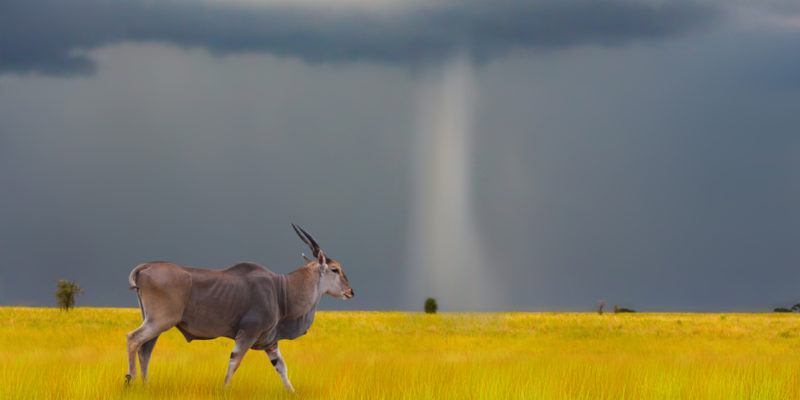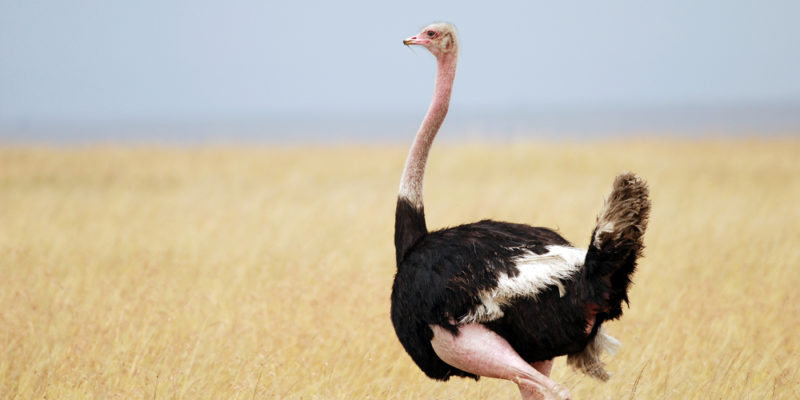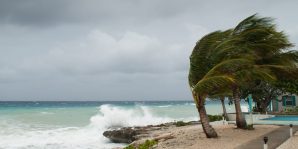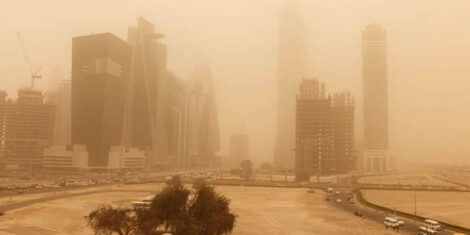We explain what a savanna is and discuss its main characteristics. In addition, we explore its climate, flora and fauna, and more.

What is a savanna?
A savanna is a large expanse of land characterized by plains and vegetation featuring herbaceous plants, shrubs, and scattered trees. It is a transition zone between the tropical rainforest and the semidesert, which usually stretches over subtropical or tropical regions.
The savanna ecosystem is found in arid zones and regions that present two distinct seasons: one with heavy rainfall lasting a few months, and another with low rainfall leading to severe droughts and lasting for most of the year.
The world’s largest savanna is found in Africa. Due to its vast size, it exhibits variations in climate, soil, flora and fauna. Savannas are also found in regions of Asia, Australia, and South America.
- See also: Desert
Savanna facts
Savannas exhibit variations in climate and soil types as they stretch away from the equator. They are classified into four types:
- Tropical savanna. It features a temperate climate with little temperature variation between the two seasons, and prevailing drought conditions. The soil is dry and not fertile.
- Temperate savanna. It shows a humid climate with cold, dry winters. The soil is somewhat more fertile than that of other types of savannas.
- Mediterranean savanna. It has a semi-arid climate characterized by greater temperature variation between seasons, low rainfall, and sparsely vegetated soils.
- Montane savanna. It features a semi-arid climate in alpine and subalpine zones, especially in regions of Africa. The soil is typically very sparsely vegetated.
Despite their differences, all types of savannas share common defining characteristics, including vast semi-arid grasslands with shrubs and sparse trees. These features differentiate savannas from grasslands (which have very fertile soils), and deserts (with soils composed of minerals and fossils).
Savanna climate

The climate of the savanna is quite warm throughout the year, with a median temperature of 64 °F (18 ºC). However, two distinct seasons can be identified:
- Wet season. This is the shorter season of the year, usually occurring between October and March in the Southern Hemisphere, and between April and September in the Northern Hemisphere. It is the period when rainfall occurs, though precipitation levels are not enough to support abundant vegetation.
- Dry season. This is the longer and drier season. Daytime temperatures can vary significantly, and strong winds are common. Due to the sparse vegetation, these winds often raise clouds of dust and soil.
Savanna fauna

The fauna of the savanna varies according to climate and soil conditions. A large number of animals are herbivores, thus requiring availability of vegetation to feed on. For this reason, most animals migrate during drought periods to areas where water and vegetation are more abundant.
Large mammals abound in the savanna, particularly in Africa, with species such as buffalos, lions, rhinoceros, antelopes, giraffes, and elephants. The Australian savanna, in contrast, features kangaroos, reptiles, and buffalos.
Savanna flora
The flora of the savanna has developed adaptations to withstand droughts. In the most arid areas, thorny shrubs, succulents and cacti thrive, as these plant species can conserve water for long periods of time.
Savannas feature few shrubby trees widely scattered across their vast territories. These trees are typically evergreen, meaning they retain their leaves throughout the year, and have very deep roots to reach water.
The acacia tree stands out with its dense canopy capable of providing refreshing shade during periods of intense heat. In addition, due to the height of its canopy, this species is chosen by giraffes to feed on.
Explore next:
References
- “Savanna” in Britannica.
- “Savanna grassland” in BBC.
- “Flore” in Britannica.



Was this information useful to you?
Yes NoThank you for visiting us :)